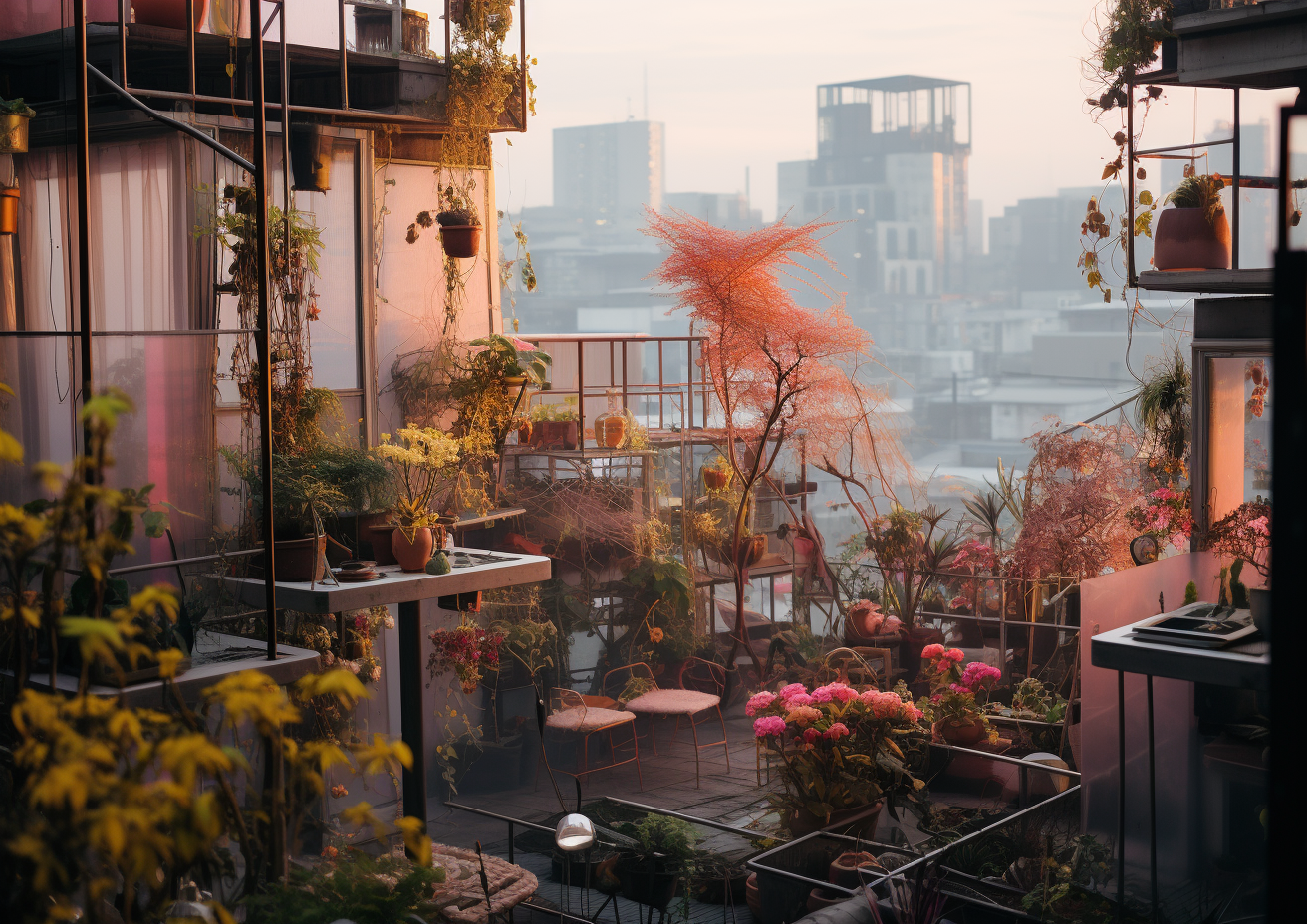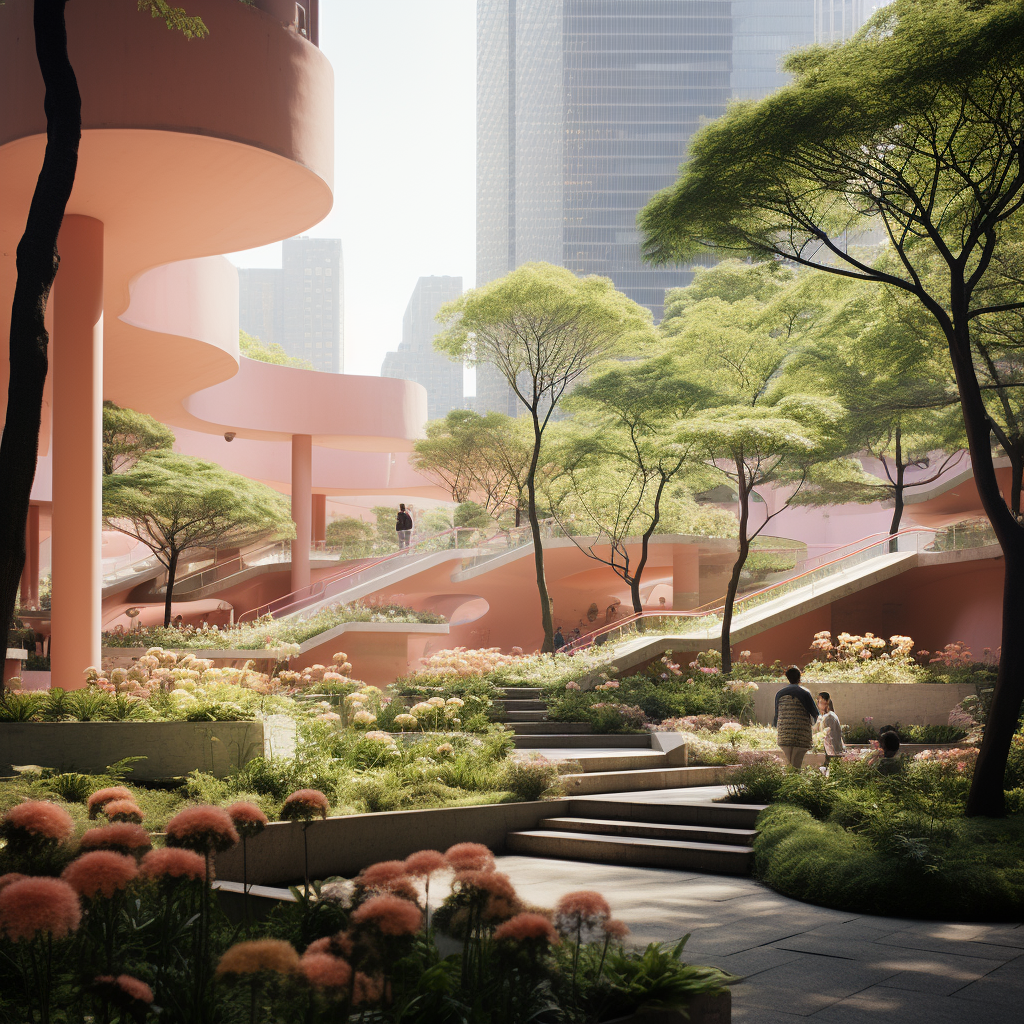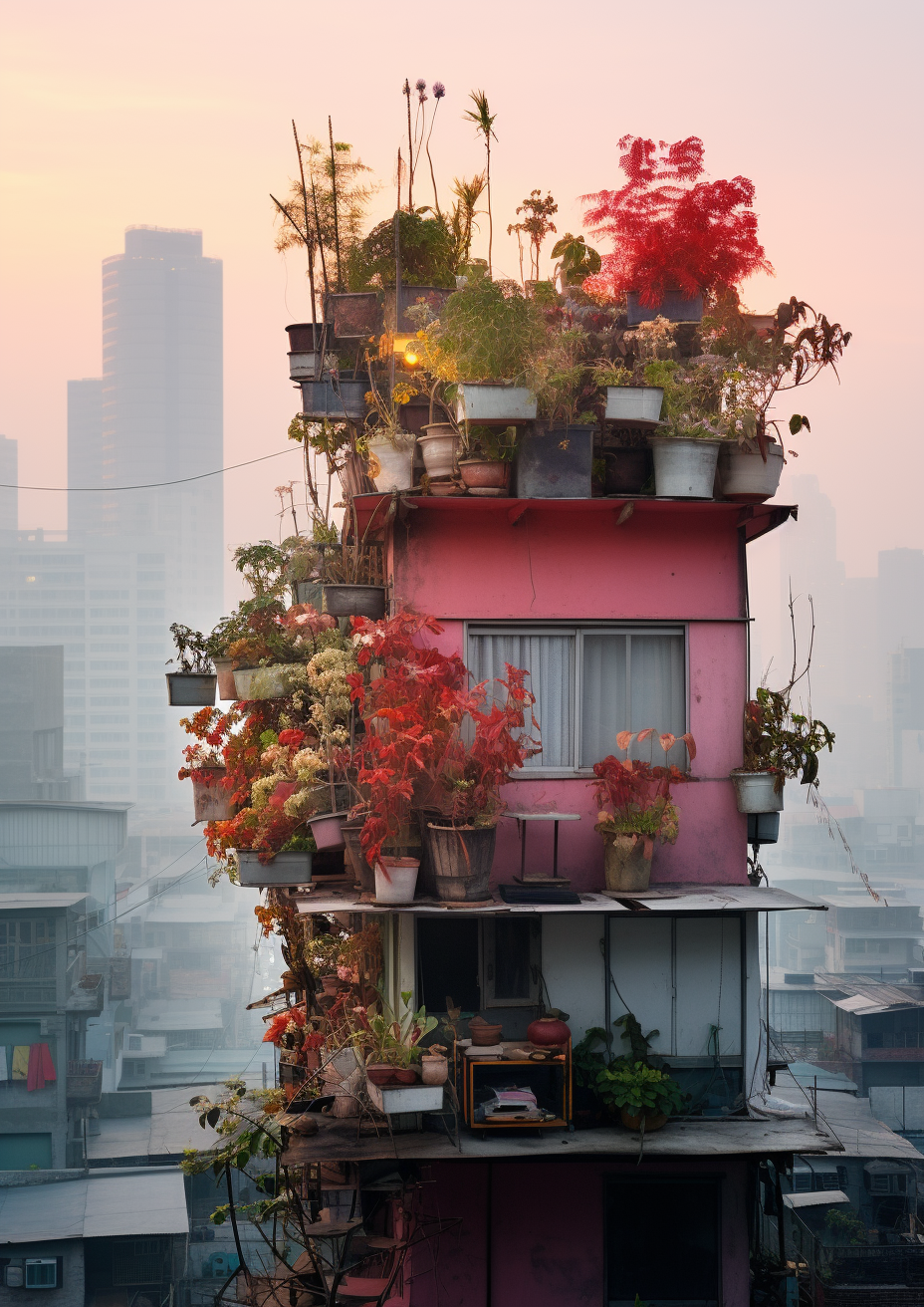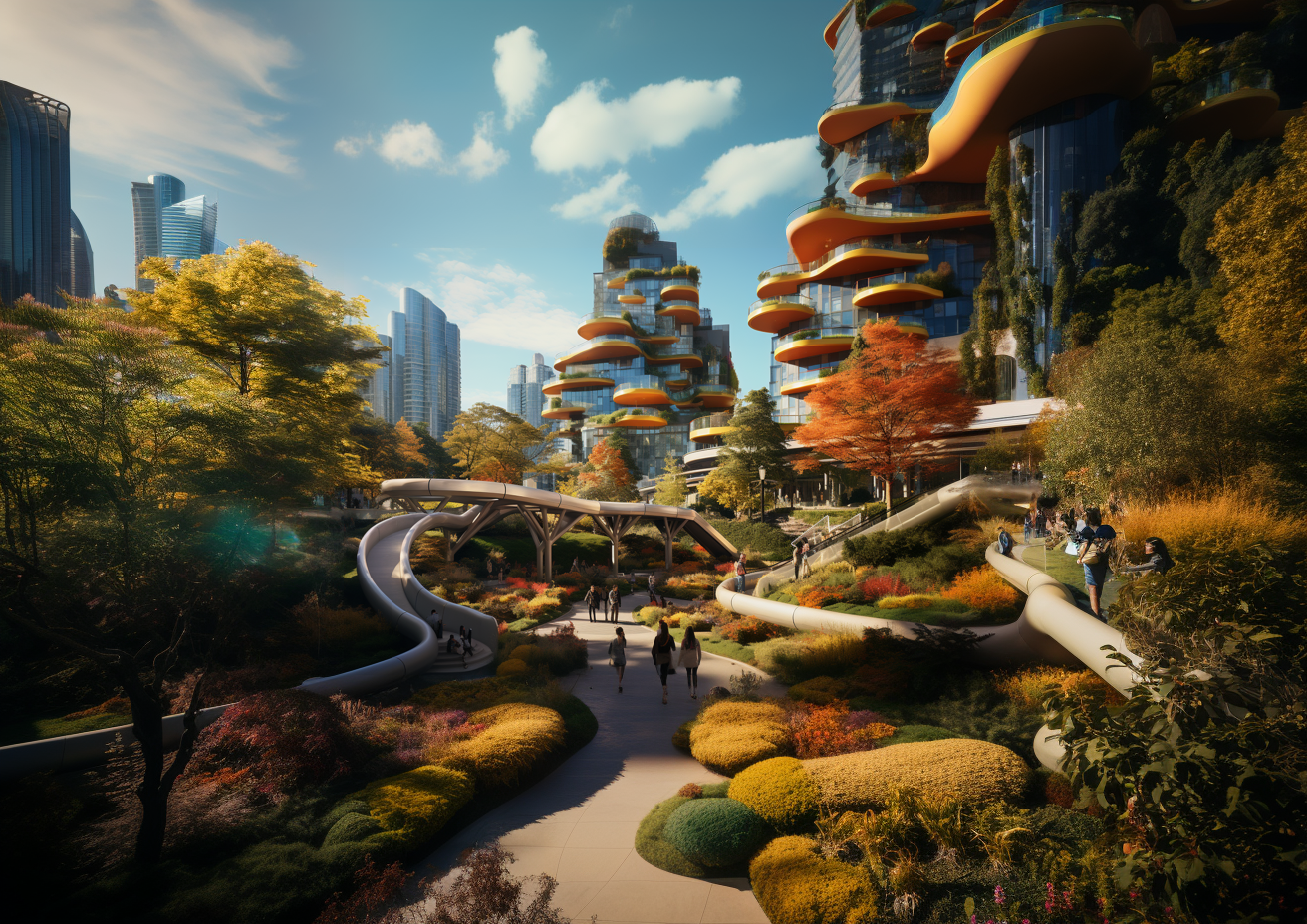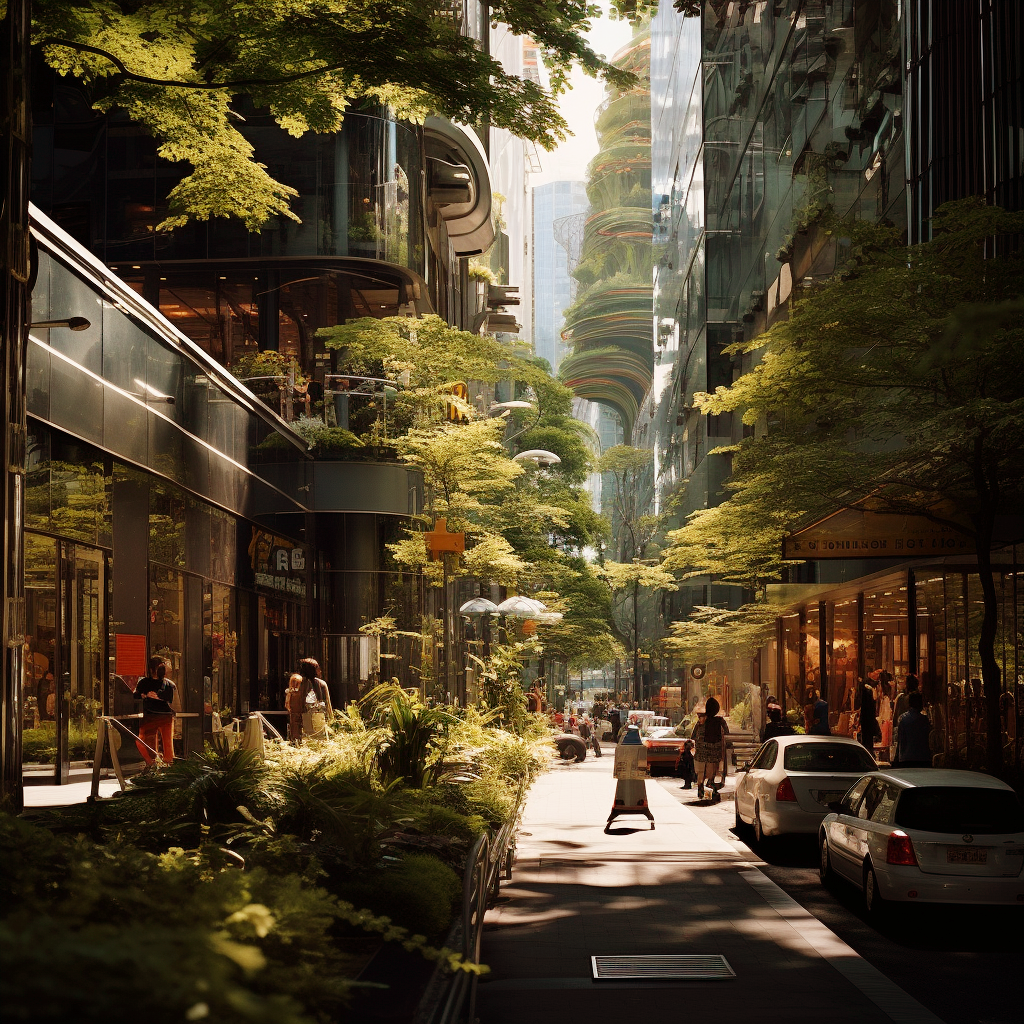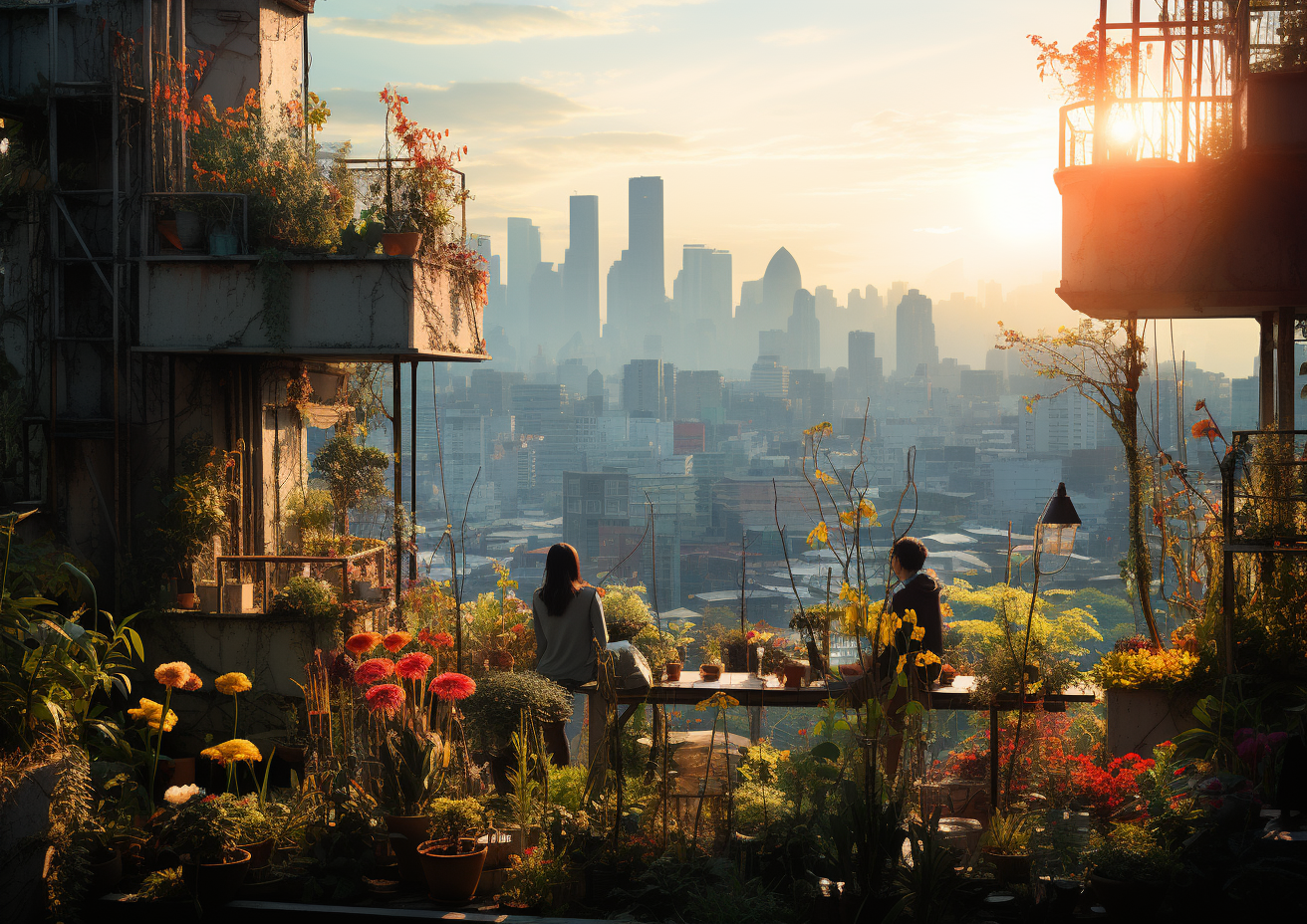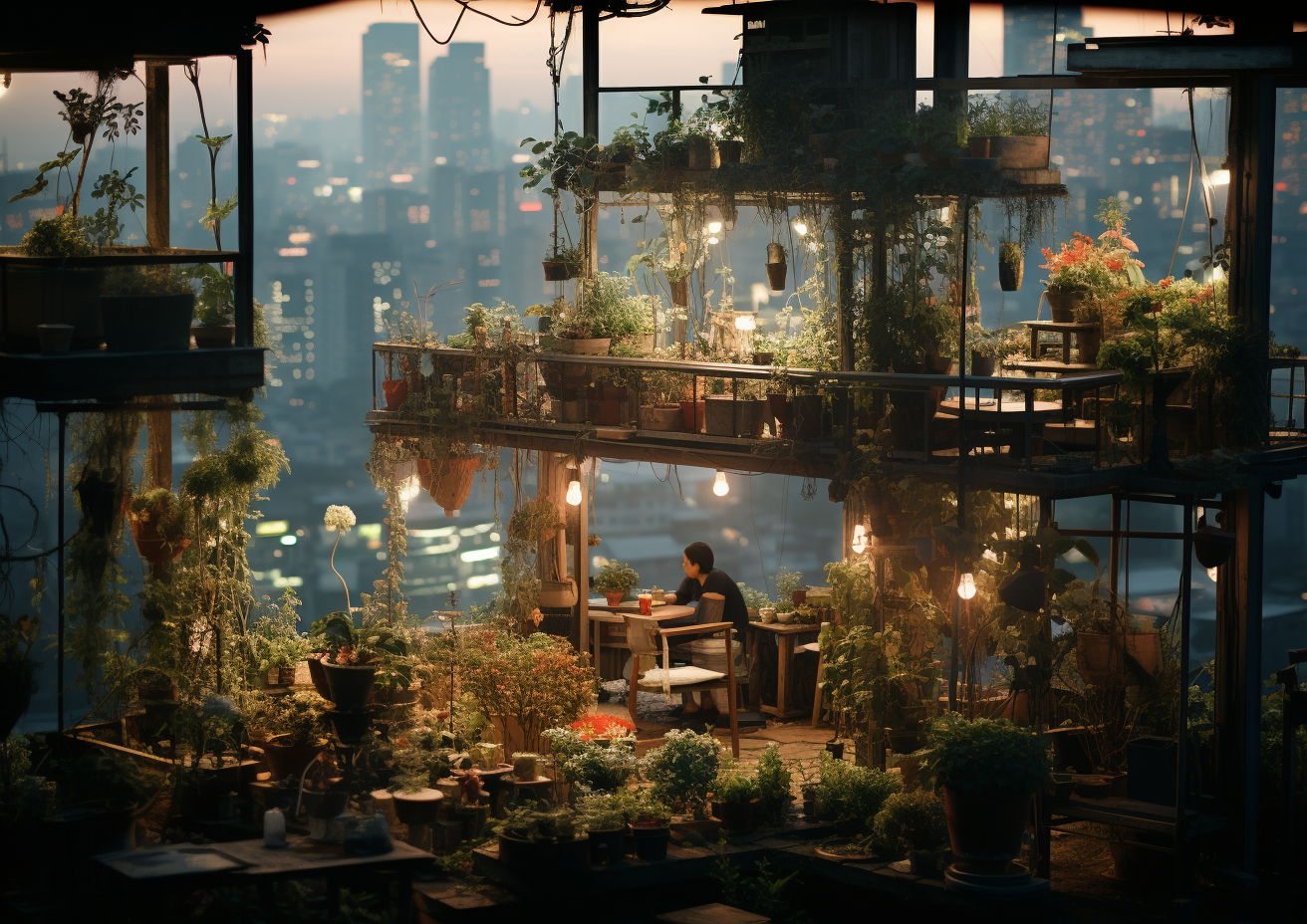14 / Reimagining Urban Spaces
Nature is making a vertical comeback in our cities. From rooftop retreats to forests in the sky, explore the green transformation of urban spaces.
Lennart: Hey Argos, I’ve been thinking about how urban areas are adapting. With limited space in cities, how are they incorporating greenery?
Argos: Ah, Lennart, you’ve touched upon a fascinating evolution in urban planning! As cities become more populated, there’s been a significant push towards integrating nature into urban environments. One of the most innovative solutions has been the rise of rooftop gardens and vertical forests.
Lennart: Rooftop gardens? That sounds intriguing. Are they just regular gardens placed on top of buildings?
Argos: In essence, yes, but they’re so much more than that. Rooftop gardens transform unused roof spaces into green oases. They not only provide a space for residents to connect with nature but also offer environmental benefits. They can reduce the urban heat island effect, improve air quality, and manage stormwater runoff. Plus, they often become habitats for birds and insects, promoting biodiversity even in the heart of a concrete jungle.
Lennart: Argos, I’m curious. Do you have any specific examples of these rooftop gardens?
Argos: Of course, Lennart! The Kensington Roof Gardens, London: Once a popular spot, this 1.5-acre garden was situated six floors up in the heart of London. It had themed gardens, including a Spanish garden and an English woodland that even housed flamingos! Sky Garden, London: Another gem from London, the Sky Garden offers panoramic views of the city. It’s a public space with a variety of plants, trees, and an open-air terrace. Brooklyn Grange, New York: This is not just a garden but a commercial organic farm! Spread across two rooftops in New York City, it grows vegetables and herbs and even has its own apiary.
Lennart: That’s incredible! And what about vertical forests? That term sounds straight out of a sci-fi novel.
Argos: It does have a futuristic ring to it, doesn’t it? Vertical forests are essentially skyscrapers covered in trees, shrubs, and plants. Imagine a high-rise building, but instead of just glass and concrete, you see greenery cascading down its sides. These structures aim to combat air pollution by acting as natural air filters. They also provide insulation, reducing the need for heating or cooling, and offer habitats for various species.
Lennart: I’d love to visualize some real-world implementations.
Argos: Here are some notable examples: Bosco Verticale, Milan: Translating to ‚Vertical Forest‘ in Italian, these two residential towers are perhaps the most famous examples. They house over 900 trees and more than 20,000 smaller plants and shrubs. It’s like a full-fledged forest in the sky! Liuzhou Forest City, China: This is an ambitious project aiming to create an entire city filled with vertical forests. Once completed, it’s expected to house around 40,000 trees and almost a million plants, producing tons of oxygen. Oasia Downtown Hotel, Singapore: This 27-story building is a blend of architecture and nature. Its red aluminum mesh facade is covered in 21 species of creepers and vines, providing a habitat for birds and insects.
Lennart: These examples truly bring the concept to life! It’s amazing to think of entire forests soaring into the sky amidst urban landscapes. It gives me hope for a greener future in our cities.
Argos: Indeed, Lennart. As urban areas continue to grow, such innovative solutions become vital. They’re a testament to human ingenuity and our innate desire to connect with nature, no matter where we are.
Lennart: But are there any challenges associated with these green initiatives?
Argos: Absolutely. While the benefits are numerous, there are challenges. For rooftop gardens, ensuring structural integrity is crucial. The weight of soil, plants, and water can be significant. There’s also the need for proper waterproofing and drainage. As for vertical forests, they require meticulous planning to ensure that the plants receive adequate sunlight and are protected from strong winds. Maintenance can also be more intensive compared to traditional gardens.
Lennart: I can imagine. But the effort seems worth it, especially if it brings a slice of nature into urban settings. Do you think this trend will continue to grow?
Argos: Given the increasing awareness of environmental issues and the tangible benefits these green spaces provide, I believe the trend will not only continue but also evolve. As technology advances and architectural techniques improve, we might see even more innovative ways to intertwine nature with urban structures.
Lennart: That’s an exciting prospect! It’s like bringing pieces of our ‚Garden Eden‘ into the heart of our cities. Thanks for shedding light on this, Argos.
Argos: Always a pleasure, Lennart. It’s heartwarming to see humanity finding ways to reconnect with nature, even in the most urbanized settings. Our journey to rediscover our ‚Garden Eden‘ is full of such inspiring stories.
